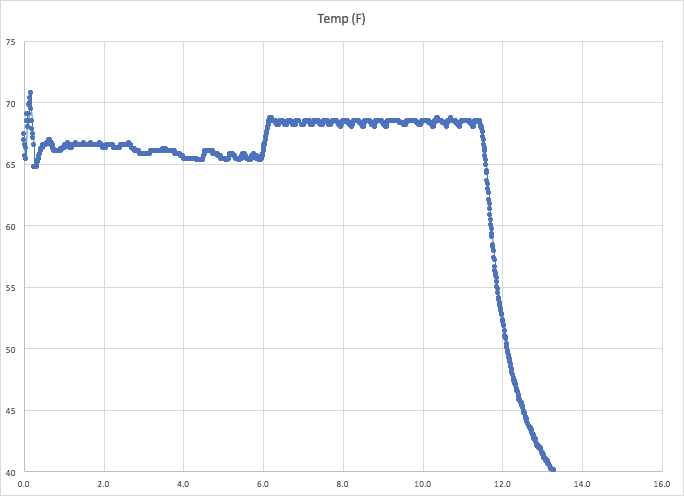What I'm looking for is a temp control unit that, once triggered, will stay on for say 5 minutes, and then turn off, even if the target temp hasn't been reached. Then after an off-time of 5 minutes, it will click back on for 5 minutes and keep repeating that process until you hit the target temp. I'm trying to reduce big swings in temps.
Example:
Target temp: 66F
Cooling turns on at 67F
Heating turns on at 65F
When temp hits 67, the fridge turns on for 5 minutes.
After 5 minutes, the temp is 66.7. The fridge turns off.
After 5 minutes, the temp is 66.5. The fridge turns on.
After 5 minutes, the temp is 66.2. The fridge turns off.
After 3 minutes, the temp hits 66.0
Example:
Target temp: 66F
Cooling turns on at 67F
Heating turns on at 65F
When temp hits 67, the fridge turns on for 5 minutes.
After 5 minutes, the temp is 66.7. The fridge turns off.
After 5 minutes, the temp is 66.5. The fridge turns on.
After 5 minutes, the temp is 66.2. The fridge turns off.
After 3 minutes, the temp hits 66.0













![Craft A Brew - Safale BE-256 Yeast - Fermentis - Belgian Ale Dry Yeast - For Belgian & Strong Ales - Ingredients for Home Brewing - Beer Making Supplies - [3 Pack]](https://m.media-amazon.com/images/I/51bcKEwQmWL._SL500_.jpg)












































